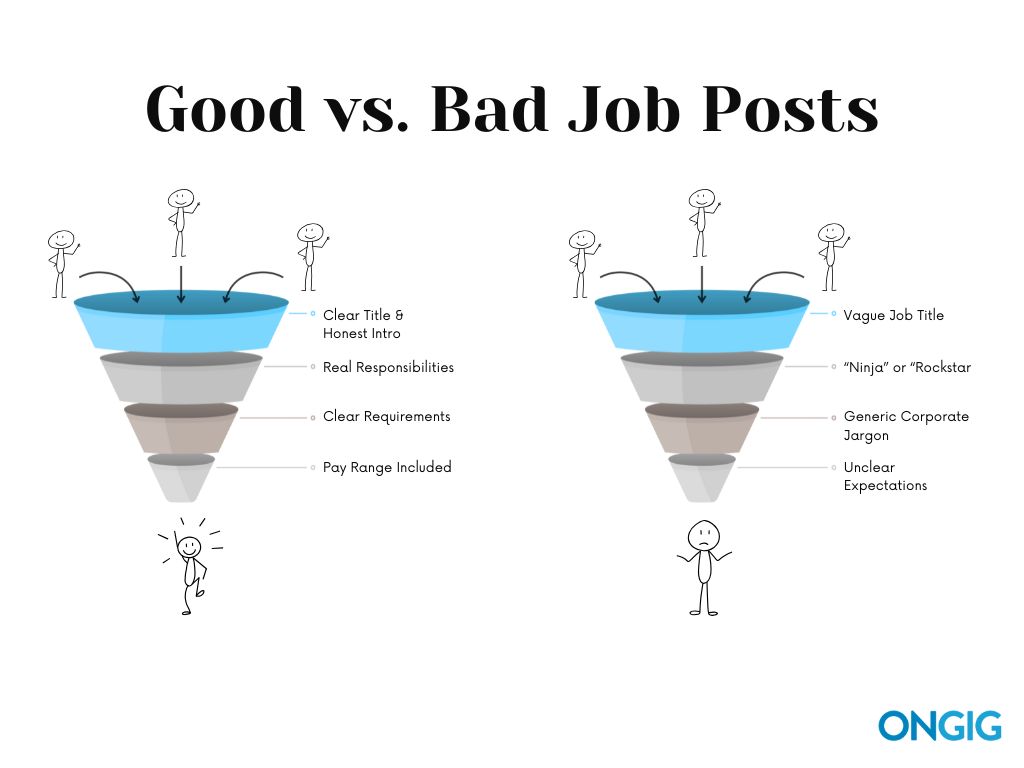- Affordable Job Description Management Software (That Still Do the Job Right) - November 19, 2025
- AI is Flooding Your Jobs With Unqualified Applicants (We’re Still Figuring Out How to Fix It) - November 18, 2025
- Consultants, Your Clients Need Better Job Descriptions (and We Can Help) - November 17, 2025
If you’ve ever opened a job posting and thought, “Yikes, this is a mess,” you’re not alone. I’ve read a lot of job descriptions over the years — and I’ve written even more. And what I’ve learned is this: a good job post doesn’t bring you the most people — it brings you the right people.
This isn’t about tricking someone into applying. It’s about helping the right person say, “Yep, this sounds like me.” Here’s how I do it.
What Makes a Job Post “Good”?
To me, a good job post is:
- Clear (you don’t need to read it twice)
- Honest (it doesn’t oversell)
- Respectful (to the person reading it)
It’s not perfect. It’s not poetic. But it’s real.

Start With the Reader (That’s Your Candidate)
Here’s what I try to do when I write: I think about the person on the other side of the screen. They’re busy. Maybe they’re tired. They’re probably skimming. So I make it easy for them.
Write Like You Talk
If I wouldn’t say it out loud, I don’t write it. I skip words like “dynamic environment” or “rockstar.” I say what I really mean.
Be Upfront
If I know the pay range, I include it. If the hours are weird, I say so. If the team’s in the office two days a week, I write that too. People appreciate the truth.
Make It Easy to Read
Big blocks of text? No thanks. I use short paragraphs, bullet points, and clear headers so folks can scan and move on.
The Goal Isn’t More Applicants — It’s the Right Ones
I used to think job posts were all about getting a ton of people to apply (that is a real problem people used to tell us at Ongig, but not anymore).More people doesn’t mean better people. What I want is the right person to read the post and think, “I could do that — and I’d like to.”
Show What Success Looks Like
Instead of saying “You’ll manage projects,” I try something like: “In your first 90 days, you’ll help us launch our new hiring system.” That’s clearer. It gives the reader a picture of what they’ll actually do.
Focus on What Matters
I don’t list 15 random skills. I ask myself: What really matters in this job? What would I look for if I were hiring someone to join my team?
Cut the Junk
Words like “fast-paced” and “ninja” don’t mean anything. I try to say what the environment is actually like. That way the person applying can tell if they’ll fit.
If You’re Hiring Outside the U.S., Adjust Your Words
Language hits different depending on where someone’s from. If I’m writing for a UK or Canadian audience, I’ll change things up.
What I Watch For:
- In the U.S., folks might care about the candidate experience, pay, and growth.
- In the UK or Canada, people often care more about inclusion and transparency.
- Words like “vacation” might need to be “holiday.” Small stuff, but it helps.
If you’re hiring in different places, tweak your post to match. And you can even create different custom templates with Ongig to help automate this part.
My Simple Job Post Format
Here’s the format I use when I want a job post to work — not just sit in a database:
- Title: Keep it simple. Real job title.
- Intro: A few sentences on what the role is and why it matters
- What You’ll Do: Bullet points that talk about outcomes, not tasks
- What You Bring: A few must-haves, maybe some nice-to-haves
- The Team/Company: A quick note on who you’ll work with and what it’s like
- Details: Pay, schedule, location, anything someone needs to know before applying
- How to Apply: Just tell them where to go and what to click
That’s it. No filler. No fluff.
Why I Wrote this:
A good job post isn’t about fancy words. It’s about making it easy for the right person to say “yes.” When I write a job post, I’m not trying to impress anyone. I’m trying to connect with one person — the one who’s right for the role. That’s it. If you do that, you’re already ahead of most.
If you’re trying to make your job posts better — clearer, fairer, easier to manage — Ongig can help.
It’s the tool I use to write job descriptions that work. See how it works.
